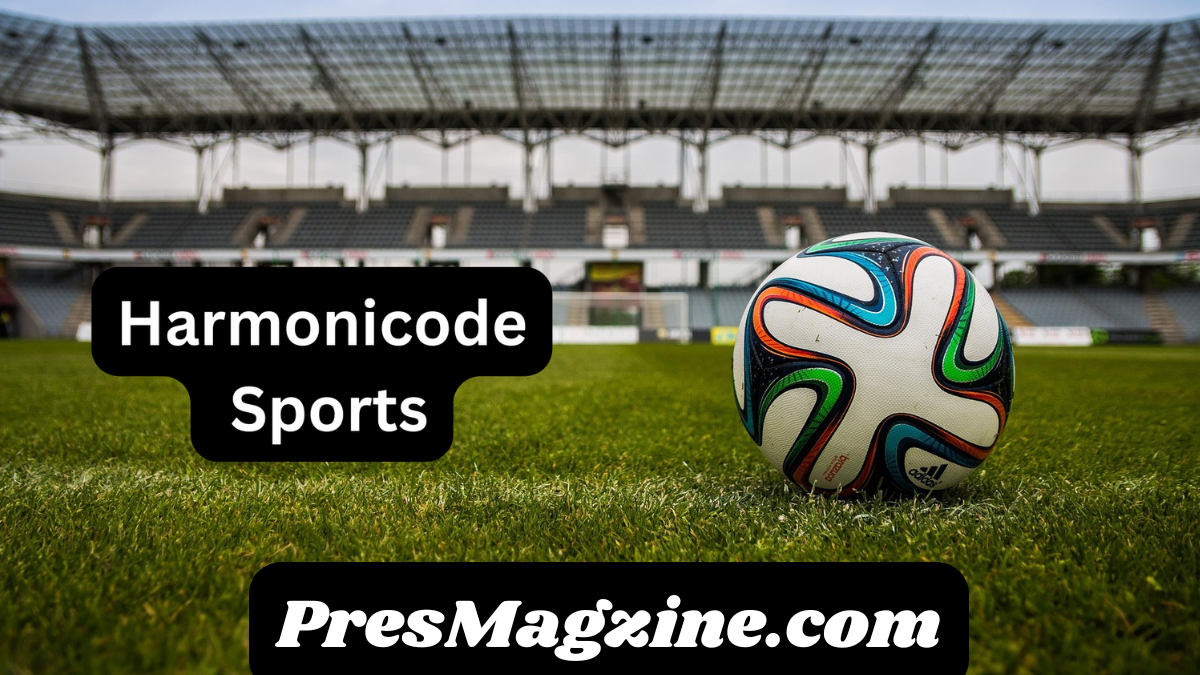Introduction to Sports Harmonicode
The term “Sports Harmonicode” may sound novel, even mysterious, yet it is rooted in a growing movement that bridges the gap between physical performance and harmonic patterns. This concept takes its name from “harmony” and “code,” suggesting a structured yet fluid approach to understanding how athletes function at peak levels. Whether you’re a professional athlete, a coach, a researcher, or a sports enthusiast, the idea of Sports Harmonicode offers a compelling framework to view sports through the lens of symmetry, rhythm, biomechanics, and performance optimization.
In an age where data analytics and AI are transforming every aspect of sports science, the search for patterns—both visible and invisible—has become essential. Sports Harmonicode emerges from this digital and scientific evolution, aiming to decode athletic movements, coordination, and decision-making by mapping the harmonic rhythms of the human body and sports environments. By doing so, it paves the way for smarter training techniques, reduced injuries, and peak performance.
The Philosophy Behind Sports Harmonicode
At its core, Sports Harmonicode is a philosophy. It views every athletic performance as a musical composition made of patterns, sequences, and timing. Just like a symphony requires harmony among different instruments, an athlete’s body demands synergy between different muscle groups, mental focus, breathing, and environmental feedback. This framework seeks to identify those moments of peak harmony where all aspects align perfectly, resulting in optimal performance.
This philosophy emphasizes balance and synchronization. It promotes the idea that the best athletes aren’t just the strongest or fastest, but those who can tap into the inherent harmonic structure of movement. When everything is aligned—from breath to muscle contraction to cognitive reaction—the athlete enters what is often called a “flow state.” This concept is not new, but the idea of mapping it with harmonic principles is revolutionary.
The Science of Patterns and Performance
Sports Harmonicode is deeply rooted in biomechanics and kinesiology. Human movement, when broken down scientifically, follows predictable patterns. Gait analysis in runners, swing mechanics in golfers, or pitching motions in baseball players—all display rhythmic patterns that can be analyzed, optimized, and replicated. These patterns are not random but exhibit harmonic traits—repeating cycles, wave-like motions, and fractal geometries.
Biomechanical sensors and motion capture technology play a vital role in detecting these patterns. Athletes wear devices that track joint angles, muscle activity, and timing. The data is then processed using machine learning algorithms to find the “code” that represents each individual’s harmonic signature. Once understood, these patterns help tailor training programs that are more efficient and less likely to lead to overuse injuries.
Mental Synchronization and Cognitive Rhythms
While physical movement forms a large part of Sports Harmonicode, cognitive alignment is equally vital. Athletes often speak of being “in the zone,” a state where their actions and decisions feel automatic and perfectly timed. This mental state is not coincidental but reflects brainwave synchronization that mirrors the rhythms of the physical body.
Cognitive neuroscientists have begun to explore how different mental states—focus, calmness, aggression—are tied to brainwave frequencies. Sports Harmonicode incorporates this understanding by training athletes not just in the gym, but also through neurofeedback, meditation, and rhythmic breathing techniques that harmonize mind and body.
Studies suggest that certain brainwave patterns, such as those in the alpha and theta ranges, are conducive to optimal sports performance. By training athletes to enter these states on demand, coaches can elevate the consistency and reliability of high-level execution.
The Role of Music and Rhythm in Athletic Training
An integral part of the Sports Harmonicode theory is the role of external rhythm, particularly music, in training and performance. Music is inherently harmonic, and its tempo can influence an athlete’s pace, coordination, and mental focus. Whether it’s boxers practicing punches to a beat, rowers moving in synchrony with a drum, or runners synchronizing their strides to music, rhythm becomes a functional tool.
Athletic programs based on the harmonicode method often use curated soundscapes to stimulate desired states. Fast tempos may be used for explosive workouts, while slow, consistent rhythms are ideal for recovery or fine motor skill training. The harmonic nature of music helps regulate breathing, stabilize heart rate, and even boost motivation during grueling sessions.
In competitive sports, where fractions of a second can define outcomes, aligning movement with sound offers a competitive edge. Athletes who train within a rhythmic structure often demonstrate greater consistency, fewer errors, and faster recovery times.
Practical Applications Across Different Sports
The principles of Sports Harmonicode can be applied across virtually all sports. In gymnastics, it aids in sequencing complex routines. In basketball, it enhances passing, shooting, and player movement by fostering group rhythm. In soccer, it can refine dribbling patterns, improve spatial awareness, and streamline teamwork.
In combat sports like boxing and MMA, understanding harmonic patterns in movement allows fighters to anticipate their opponent’s actions and strike with greater precision. Coaches can also analyze how fatigue disrupts these patterns, helping tailor endurance routines that maintain form under pressure.
Swimming, which already involves a high degree of rhythm due to its reliance on strokes and breath control, also benefits from harmonicode methodologies. Swimmers trained in this way often display better efficiency, longer glide phases, and more synchronized turns.
Even in esports and motor racing, where physicality is less visible but timing is everything, the same rhythmic principles apply. Finger dexterity, reaction times, and decision-making benefit from aligning neural rhythms with mechanical or digital interfaces.
Injury Prevention and Recovery
One of the most promising aspects of Sports Harmonicode is its role in injury prevention. Injuries often occur when the body falls out of harmonic alignment—when joints move out of sync, when muscles compensate improperly, or when fatigue disrupts natural patterns. By training within the body’s optimal harmonic range, athletes can maintain integrity in their movements even under stress.
Physical therapists and sports medicine experts can use harmonicode diagnostics to spot asymmetries or irregular patterns that precede injuries. For instance, a runner with a slightly shorter stride on one side may not notice the imbalance, but it creates cumulative stress that can lead to overuse injuries. By correcting these patterns through targeted training and rhythm-based rehabilitation, recovery becomes faster and more sustainable.
Harmonic recovery programs focus on restoring natural movement cycles. This might include gentle oscillatory exercises, aquatic therapy, or rhythm-based mobility drills. Music therapy and guided breathing also play a role in calming the nervous system and resetting the athlete’s internal clock.
Coaching Evolution Through Harmonic Insights
The rise of Sports Harmonicode also marks a shift in how coaches approach athlete development. Traditional coaching emphasizes repetition and conditioning, but the harmonicode approach adds a dimension of pattern awareness, symmetry evaluation, and internal rhythm management.
Coaches trained in this methodology learn to see beyond raw performance metrics. They analyze movement quality, timing of transitions, and mental-emotional states. Training becomes more personalized, with each athlete receiving a harmonic profile that guides their physical, cognitive, and emotional development.
Video breakdowns and sensor data can be turned into rhythmic diagrams, offering visualizations that resonate more deeply than spreadsheets. This visual mapping helps both coaches and athletes understand not just what went wrong, but when and how it broke the harmonic flow.
Future Potential and Integration with Technology
As technology continues to advance, the role of Sports Harmonicode will likely grow. Wearables are becoming more precise, offering real-time feedback on motion, heart rate variability, and muscle activation. AI-driven platforms can detect micro-patterns invisible to the human eye, delivering corrective suggestions instantly.
Virtual reality (VR) and augmented reality (AR) platforms are beginning to integrate harmonicode principles into simulations. Athletes can train in immersive environments where timing and coordination are emphasized through dynamic feedback loops. These tools not only improve skills but also deepen the athlete’s awareness of their body’s rhythm.
Artificial intelligence could even predict an athlete’s risk of injury or performance drop based on deviations from their known harmonic patterns. In this way, Sports Harmonicode could become the backbone of a fully integrated performance monitoring system.
Cultural and Global Influence
Beyond science and training, Sports Harmonicode has the potential to influence sports culture globally. It champions a holistic view of performance—one that values flow, creativity, and self-awareness as much as strength and aggression. In doing so, it aligns with ancient traditions such as martial arts, yoga, and dance, where movement harmony is central.
This concept could inspire new forms of competition or sports entirely. Imagine synchronized individual sports where points are awarded based on harmonic alignment, or new scoring systems that integrate rhythm and balance. Artistic sports like figure skating or rhythmic gymnastics may also adopt more refined harmonic codes in judging.
At the community level, introducing harmonicode concepts into youth sports could promote healthier athletic development. Rather than pushing early specialization or overtraining, kids could learn to move naturally, joyfully, and in rhythm with their bodies.
Conclusion The New Frontier of Athletic Mastery
Sports Harmonicode represents a groundbreaking way to understand athletic excellence. It transcends traditional metrics by emphasizing flow, rhythm, and harmony in every aspect of performance. Whether through biomechanics, mental training, music integration, or AI-enhanced analytics, it invites athletes and coaches to look beyond brute force and embrace the elegant code within.
This philosophy could redefine how we train, compete, and recover. As science and technology continue to uncover the intricate patterns that govern elite performance, Sports Harmonicode stands at the frontier—where data meets intuition, and movement becomes music.
FAQs
What is Sports Harmonicode?
Sports Harmonicode is a conceptual framework that analyzes the harmonic patterns in athletic movement and cognitive states to enhance performance, reduce injury, and improve training efficiency.
Is Sports Harmonicode based on science?
Yes, it draws from biomechanics, neuroscience, kinesiology, rhythm science, and AI-based motion analytics.
Who can benefit from Sports Harmonicode?
Athletes, coaches, sports therapists, and even casual fitness enthusiasts can benefit from its principles of balance, rhythm, and pattern recognition.
Does it apply to all sports?
Absolutely. From traditional sports to digital Sports Harmonicode arenas like esports, any discipline involving timing and movement can integrate harmonicode insights.
Is this approach recognized in mainstream sports science?
While relatively new, its principles are increasingly supported by data-driven sports science and are gaining attention in elite training environments.

